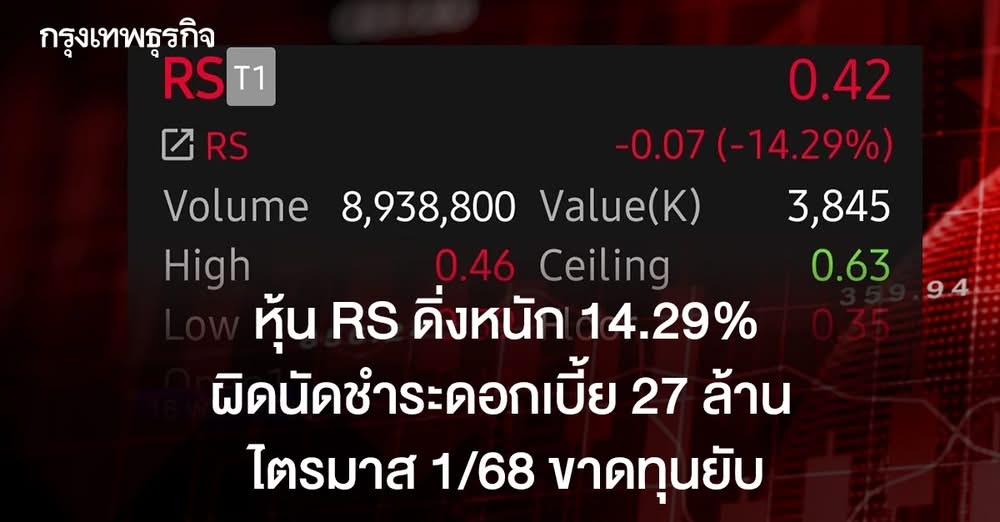🩷 รวมข่าวจากเวบ TechRadar 🩷
#รวมข่าวIT #20251125 #TechRadar
รีวิวแบตเตอรี่ LiTime X Mini และอุปกรณ์เสริม
เรื่องนี้เล่าได้ว่า LiTime เปิดตัวแบตเตอรี่ X Mini รุ่นใหม่ที่มีความจุ 320Ah หรือราว 4kWh ซึ่งสามารถทำงานร่วมกับอินเวอร์เตอร์และเครื่องชาร์จเพื่อสร้างระบบไฟฟ้า AC ขนาด 2kW ได้ในราคาประมาณ 1,500 ดอลลาร์ จุดเด่นคือความยืดหยุ่น ผู้ใช้สามารถเพิ่มแบตเตอรี่หรือเปลี่ยนอินเวอร์เตอร์ให้แรงขึ้นได้ตามต้องการ ตัวแบตเตอรี่มีน้ำหนักเพียง 25 กิโลกรัม ขนาดไม่ต่างจากแบตรถยนต์ทั่วไป แต่มีฟังก์ชันล้ำ ๆ เช่น Bluetooth สำหรับตรวจสอบสถานะ, ระบบจัดการแบตเตอรี่ที่มีการป้องกันกว่า 20 รูปแบบ และทนต่ออุณหภูมิต่ำถึง -20 องศาเซลเซียส จุดที่น่าสนใจคือสามารถต่อแบตเตอรี่หลายลูกเพื่อขยายกำลังได้ และยังทำงานเป็น UPS สำรองไฟได้อีกด้วย เหมาะกับคนที่ชอบปรับแต่งระบบเอง แต่ถ้าไม่ถนัด DIY อาจไม่เหมาะนัก
https://www.techradar.com/pro/litime-x-mini-battery-and-accessories-review
iPadOS 26 กับการจัดการหน้าต่างที่ทำให้สับสน แต่มีทริกง่าย ๆ
Apple ปรับโฉมครั้งใหญ่ใน iPadOS 26 โดยเพิ่มระบบจัดการหน้าต่างแบบ Mac เข้ามา แต่หลายคนรวมถึงผู้เขียนพบว่ามันใช้งานยากและ Apple ไม่ได้อธิบายชัดเจน วิธีแก้คือเพิ่ม “Multitasking widget” ใน Control Center ซึ่งจะช่วยให้สลับโหมดการใช้งานได้ง่ายขึ้น ไม่ว่าจะเป็นโหมดเต็มหน้าจอที่เหมาะกับการดูสื่อบันเทิง, โหมด Windowed Apps ที่เหมาะกับการทำงานหลายแอปพร้อมกัน หรือโหมด Stage Manager ที่ช่วยจัดการ workspace ได้ดียิ่งขึ้น เมื่อเข้าใจการสลับโหมดเหล่านี้ iPad จะกลายเป็นเครื่องมือที่ทั้งบันเทิงและทำงานได้อย่างมีประสิทธิภาพมากขึ้น
https://www.techradar.com/tablets/ipad/ipados-26s-window-management-is-confusing-heres-an-easy-trick-to-use-it-properly
NATO จับมือ Google Cloud สร้าง Sovereign Cloud ที่ปลอดภัย
NATO ลงนามข้อตกลงครั้งใหญ่กับ Google Cloud เพื่อใช้บริการ Google Distributed Cloud (GDC) ซึ่งเป็นระบบ sovereign cloud แบบ air-gapped ที่ออกแบบมาเพื่อความปลอดภัยสูงสุด โดยเฉพาะการจัดการข้อมูลที่อ่อนไหวจากศูนย์ JATEC ที่เกี่ยวข้องกับสงครามรัสเซีย-ยูเครน จุดสำคัญคือ NATO จะสามารถควบคุมข้อมูลให้อยู่ในอาณาเขตของตนเองตามข้อกำหนดด้าน sovereignty และ compliance ข้อตกลงนี้ช่วยเร่งการปรับปรุงระบบดิจิทัลของ NATO และยังสะท้อนถึงการเติบโตของ Google Cloud ที่รายได้เพิ่มขึ้นกว่า 28% ในไตรมาสล่าสุด
https://www.techradar.com/pro/nato-signs-major-google-deal-to-ensure-secure-sovereign-cloud
Android เตรียมรองรับ AirDrop มากขึ้น
Google สร้างความฮือฮาเมื่อประกาศว่า Android Quick Share จะสามารถทำงานร่วมกับ AirDrop ของ Apple ได้ ตอนนี้ใช้ได้เฉพาะ Pixel 10 แต่ Snapdragon ก็ออกมาบอกว่าจะรองรับในอนาคต ซึ่งหมายความว่าโทรศัพท์ Android รุ่นใหม่ ๆ อย่าง Samsung Galaxy S25 และ OnePlus 15 อาจใช้ฟีเจอร์นี้ได้ รวมถึง Nothing Phone 3 ที่ CEO ของ Nothing ยืนยันว่าจะนำมาใช้แน่นอน แม้ยังมีคำถามว่า Apple จะยอมให้ฟีเจอร์นี้ทำงานต่อไปหรือไม่ แต่ถ้าไม่ถูกบล็อก นี่จะเป็นก้าวสำคัญที่ทำให้การแชร์ไฟล์ระหว่าง iPhone และ Android ง่ายขึ้นมาก
https://www.techradar.com/phones/android/loads-more-android-phones-could-soon-work-with-airdrop
GMKtec เปิดตัว EVO-T2 Mini-PC รุ่นใหม่ พร้อมชิป Intel Panther Lake
เรื่องราวนี้พูดถึงการเปิดตัวคอมพิวเตอร์ขนาดเล็ก EVO-T2 จาก GMKtec ที่สร้างความฮือฮาเพราะเป็นรุ่นแรกที่ใช้ชิป Panther Lake ของ Intel รุ่นใหม่ล่าสุด ตัวเครื่องรองรับหน่วยความจำสูงสุดถึง 128GB LPDDR5X และมีช่อง SSD สองช่องที่รวมกันได้ถึง 16TB จุดเด่นคือพลังการประมวลผลด้าน AI ที่สูงถึง 180 TOPS ทำให้เหมาะกับงานที่ต้องใช้ AI หนัก ๆ ทั้งยังคงดีไซน์เรียบง่ายเหมือนรุ่นก่อน แต่เพิ่มประสิทธิภาพอย่างเห็นได้ชัด การเปิดตัวจริงคาดว่าจะเกิดขึ้นในไตรมาสแรกของปี 2026
https://www.techradar.com/pro/gmktecs-next-mini-pc-will-be-the-first-to-feature-intel-panther-lake-and-some-other-seriously-impressive-specs
นักวิจัยทดสอบ AI สร้างมัลแวร์ แต่ผลลัพธ์กลับไม่น่ากลัวอย่างที่คิด
ทีมวิจัยจาก Netskope พยายามทดสอบว่าโมเดลภาษา AI อย่าง GPT-3.5 และ GPT-4 สามารถสร้างโค้ดมัลแวร์ที่ใช้งานได้จริงหรือไม่ ผลคือแม้ AI จะสร้างโค้ดออกมาได้ แต่เมื่อนำไปทดสอบในสภาพแวดล้อมจริงกลับล้มเหลว ไม่เสถียร และทำงานผิดพลาดบ่อยครั้ง แม้ GPT-5 จะมีคุณภาพโค้ดที่ดีขึ้น แต่ก็มีระบบป้องกันที่ทำให้โค้ดไม่สามารถใช้โจมตีได้จริง เรื่องนี้สะท้อนว่า AI ยังไม่พร้อมสำหรับการสร้างมัลแวร์ที่ทำงานได้อย่างอัตโนมัติเต็มรูปแบบ
https://www.techradar.com/pro/experts-tried-to-get-ai-to-create-malicious-security-threats-but-what-it-did-next-was-a-surprise-even-to-them
Sam Altman และ Jony Ive เผยโฉมอุปกรณ์ AI ที่จะมอบ “บรรยากาศสงบ” ให้ผู้ใช้
Sam Altman ซีอีโอ OpenAI และ Jony Ive อดีตนักออกแบบจาก Apple กำลังพัฒนาอุปกรณ์ AI ภายใต้บริษัท IO ที่ตั้งใจให้แตกต่างจากเทคโนโลยีทั่วไป โดยจะเป็นอุปกรณ์ที่มีความเข้าใจบริบทชีวิตผู้ใช้ รู้ว่าเมื่อไรควรนำเสนอข้อมูล และสร้างบรรยากาศที่สงบเหมือนนั่งอยู่ในกระท่อมริมทะเลสาบ ไม่ใช่ความวุ่นวายแบบสมาร์ทโฟนในปัจจุบัน ทั้งคู่ยืนยันว่าอุปกรณ์นี้จะเปิดตัวภายในสองปี และจะเป็นสิ่งที่ทำให้ผู้ใช้ “ยิ้มและรู้สึกมีความสุข”
https://www.techradar.com/ai-platforms-assistants/sam-altman-and-jony-ive-ai-device-is-now-in-its-prototype-phase-and-its-vibe-is-defined
รีวิวเครื่องเล่นแผ่นเสียง Sony PS-LX310BT รุ่นราคาย่อมเยา ใช้ง่ายและดูดี
เครื่องเล่นแผ่นเสียง Sony PS-LX310BT ถูกยกให้เป็นหนึ่งในตัวเลือกยอดนิยมสำหรับผู้เริ่มต้นเล่นแผ่นเสียง จุดเด่นคือราคาที่จับต้องได้และการใช้งานที่ง่าย เพียงกดปุ่มเล่นหรือหยุดโดยไม่ต้องยุ่งกับเข็มหรือโทนอาร์ม ดีไซน์เรียบหรูและรองรับการเชื่อมต่อทั้ง Bluetooth และ RCA แม้จะไม่มีช่อง 3.5 มม. และการตั้งค่าเริ่มต้นอาจดูยุ่งเล็กน้อย แต่โดยรวมถือว่าเป็นเครื่องเล่นที่เหมาะสำหรับมือใหม่ที่อยากสัมผัสโลกของเสียงจากแผ่นไวนิล
https://www.techradar.com/audio/turntables/i-tested-the-entry-level-turntable-that-everyone-raves-about-and-i-totally-get-it
ChatGPT เปิดตัวฟีเจอร์ Shopping Research ช่วยค้นหาและเปรียบเทียบสินค้าให้คุณ
OpenAI เพิ่มเครื่องมือใหม่ใน ChatGPT ชื่อว่า Shopping Research ที่ช่วยผู้ใช้ค้นหาสินค้าและเปรียบเทียบราคาได้โดยไม่ต้องเปิดหลายแท็บ เครื่องมือนี้สามารถสร้างคู่มือการซื้อที่ปรับตามความต้องการของผู้ใช้ เช่น การหาของขวัญแปลกใหม่หรือทีวีที่เหมาะกับห้องสว่าง ฟีเจอร์นี้เปิดให้ใช้ทั้งในแผนฟรีและแบบเสียเงิน โดยเฉพาะช่วงเทศกาลช้อปปิ้งปลายปีที่เข้าถึงได้แทบไม่จำกัด ถือเป็นการยกระดับ ChatGPT ให้กลายเป็นผู้ช่วยช้อปปิ้งส่วนตัวที่สะดวกและฉลาดขึ้น
https://www.techradar.com/ai-platforms-assistants/chatgpt/chatgpts-new-shopping-research-tool-compares-products-for-you-so-you-dont-have-to-open-20-tabs
ช่องโหว่ Windows Server ถูกแฮกเกอร์ใช้แพร่กระจายมัลแวร์
ข่าวนี้เล่าถึงการค้นพบช่องโหว่ใน Windows Server ที่ถูกโจมตีโดยแฮกเกอร์เพื่อแพร่กระจายมัลแวร์ไปยังระบบต่าง ๆ ช่องโหว่นี้ทำให้ผู้ไม่หวังดีสามารถเข้าถึงและควบคุมเครื่องเซิร์ฟเวอร์ได้โดยไม่ต้องมีสิทธิ์ที่ถูกต้อง Microsoft ได้ออกคำเตือนและแนะนำให้ผู้ใช้รีบอัปเดตแพตช์เพื่อป้องกันการโจมตีเพิ่มเติม เหตุการณ์นี้สะท้อนถึงความสำคัญของการดูแลระบบเซิร์ฟเวอร์ให้ทันสมัยอยู่เสมอ
https://www.techradar.com/pro/security/windows-server-flaw-targeted-by-hackers-to-spread-malware-heres-what-we-know
Cox Enterprises ถูกโจมตีข้อมูลจาก Oracle แต่ไม่เปิดเผยผู้ก่อเหตุ
ox Enterprises บริษัทสื่อและโทรคมนาคมรายใหญ่ในสหรัฐฯ ยืนยันว่าถูกโจมตีข้อมูลผ่านระบบ Oracle แต่ยังไม่เปิดเผยว่าใครเป็นผู้ก่อเหตุหรือวิธีการที่ใช้ การโจมตีครั้งนี้ทำให้ข้อมูลลูกค้าบางส่วนเสี่ยงต่อการรั่วไหล แม้บริษัทจะพยายามควบคุมสถานการณ์และเสริมมาตรการความปลอดภัย แต่การไม่เปิดเผยรายละเอียดก็สร้างความกังวลต่อผู้ใช้งานและนักลงทุน
https://www.techradar.com/pro/security/cox-reveals-it-was-hit-by-oracle-data-breach-but-it-wont-name-who-carried-out-the-attack
Kodak เปิดตัวกล้องฟิล์ม 35mm ราคาย่อมเยา กลับสู่ความคลาสสิก
Kodak เปิดตัวกล้องฟิล์ม 35mm รุ่นใหม่ที่มีราคาย่อมเยาและดีไซน์ย้อนยุค เหมาะสำหรับผู้ที่หลงใหลในความคลาสสิกของการถ่ายภาพด้วยฟิล์ม กล้องรุ่นนี้มีให้เลือกทั้งสีดำและสีขาว ใช้งานง่ายและเข้าถึงได้สำหรับคนรุ่นใหม่ที่อยากสัมผัสประสบการณ์การถ่ายภาพแบบดั้งเดิม ถือเป็นการนำเสน่ห์ของฟิล์มกลับมาอีกครั้งในยุคดิจิทัล
https://www.techradar.com/cameras/kodaks-affordable-35mm-film-camera-looks-like-a-black-or-white-blast-from-the-past
Disney เปิดตัวหุ่นยนต์ Olaf ที่สมจริงจนทำให้ผู้ชมขนลุก
Disney สร้างความตื่นตาตื่นใจด้วยหุ่นยนต์ Olaf จาก Frozen ที่เคลื่อนไหวและแสดงออกได้อย่างสมจริง หุ่นยนต์นี้ถูกพัฒนาให้มีท่าทางและอารมณ์เหมือนตัวละครในภาพยนตร์ ทำให้ผู้ชมรู้สึกเหมือน Olaf มีชีวิตจริง ๆ เทคโนโลยีนี้สะท้อนถึงความก้าวหน้าของ Disney ในการผสมผสานหุ่นยนต์เข้ากับความบันเทิง และอาจเป็นจุดเริ่มต้นของการนำตัวละครอื่น ๆ มาสู่โลกจริงในอนาคต
https://www.techradar.com/streaming/entertainment/disneys-new-olaf-robot-is-so-real-itll-give-you-chills
Iberia สายการบินสเปนประกาศถูกโจมตีข้อมูลครั้งใหญ่
Iberia สายการบินรายใหญ่ของสเปนแจ้งลูกค้าว่าถูกโจมตีข้อมูลครั้งใหญ่ ทำให้ข้อมูลส่วนตัวของผู้โดยสารบางส่วนเสี่ยงต่อการรั่วไหล แม้บริษัทจะรีบดำเนินการแก้ไขและเสริมมาตรการความปลอดภัย แต่เหตุการณ์นี้ก็สร้างความกังวลต่อผู้โดยสารและอุตสาหกรรมการบินโดยรวม เพราะสะท้อนถึงความเปราะบางของระบบดิจิทัลในธุรกิจที่เกี่ยวข้องกับข้อมูลจำนวนมหาศาล
https://www.techradar.com/pro/security/iberia-tells-customers-it-was-hit-by-a-major-security-breach
#รวมข่าวIT #20251125 #TechRadar
รีวิวแบตเตอรี่ LiTime X Mini และอุปกรณ์เสริม
เรื่องนี้เล่าได้ว่า LiTime เปิดตัวแบตเตอรี่ X Mini รุ่นใหม่ที่มีความจุ 320Ah หรือราว 4kWh ซึ่งสามารถทำงานร่วมกับอินเวอร์เตอร์และเครื่องชาร์จเพื่อสร้างระบบไฟฟ้า AC ขนาด 2kW ได้ในราคาประมาณ 1,500 ดอลลาร์ จุดเด่นคือความยืดหยุ่น ผู้ใช้สามารถเพิ่มแบตเตอรี่หรือเปลี่ยนอินเวอร์เตอร์ให้แรงขึ้นได้ตามต้องการ ตัวแบตเตอรี่มีน้ำหนักเพียง 25 กิโลกรัม ขนาดไม่ต่างจากแบตรถยนต์ทั่วไป แต่มีฟังก์ชันล้ำ ๆ เช่น Bluetooth สำหรับตรวจสอบสถานะ, ระบบจัดการแบตเตอรี่ที่มีการป้องกันกว่า 20 รูปแบบ และทนต่ออุณหภูมิต่ำถึง -20 องศาเซลเซียส จุดที่น่าสนใจคือสามารถต่อแบตเตอรี่หลายลูกเพื่อขยายกำลังได้ และยังทำงานเป็น UPS สำรองไฟได้อีกด้วย เหมาะกับคนที่ชอบปรับแต่งระบบเอง แต่ถ้าไม่ถนัด DIY อาจไม่เหมาะนัก
https://www.techradar.com/pro/litime-x-mini-battery-and-accessories-review
iPadOS 26 กับการจัดการหน้าต่างที่ทำให้สับสน แต่มีทริกง่าย ๆ
Apple ปรับโฉมครั้งใหญ่ใน iPadOS 26 โดยเพิ่มระบบจัดการหน้าต่างแบบ Mac เข้ามา แต่หลายคนรวมถึงผู้เขียนพบว่ามันใช้งานยากและ Apple ไม่ได้อธิบายชัดเจน วิธีแก้คือเพิ่ม “Multitasking widget” ใน Control Center ซึ่งจะช่วยให้สลับโหมดการใช้งานได้ง่ายขึ้น ไม่ว่าจะเป็นโหมดเต็มหน้าจอที่เหมาะกับการดูสื่อบันเทิง, โหมด Windowed Apps ที่เหมาะกับการทำงานหลายแอปพร้อมกัน หรือโหมด Stage Manager ที่ช่วยจัดการ workspace ได้ดียิ่งขึ้น เมื่อเข้าใจการสลับโหมดเหล่านี้ iPad จะกลายเป็นเครื่องมือที่ทั้งบันเทิงและทำงานได้อย่างมีประสิทธิภาพมากขึ้น
https://www.techradar.com/tablets/ipad/ipados-26s-window-management-is-confusing-heres-an-easy-trick-to-use-it-properly
NATO จับมือ Google Cloud สร้าง Sovereign Cloud ที่ปลอดภัย
NATO ลงนามข้อตกลงครั้งใหญ่กับ Google Cloud เพื่อใช้บริการ Google Distributed Cloud (GDC) ซึ่งเป็นระบบ sovereign cloud แบบ air-gapped ที่ออกแบบมาเพื่อความปลอดภัยสูงสุด โดยเฉพาะการจัดการข้อมูลที่อ่อนไหวจากศูนย์ JATEC ที่เกี่ยวข้องกับสงครามรัสเซีย-ยูเครน จุดสำคัญคือ NATO จะสามารถควบคุมข้อมูลให้อยู่ในอาณาเขตของตนเองตามข้อกำหนดด้าน sovereignty และ compliance ข้อตกลงนี้ช่วยเร่งการปรับปรุงระบบดิจิทัลของ NATO และยังสะท้อนถึงการเติบโตของ Google Cloud ที่รายได้เพิ่มขึ้นกว่า 28% ในไตรมาสล่าสุด
https://www.techradar.com/pro/nato-signs-major-google-deal-to-ensure-secure-sovereign-cloud
Android เตรียมรองรับ AirDrop มากขึ้น
Google สร้างความฮือฮาเมื่อประกาศว่า Android Quick Share จะสามารถทำงานร่วมกับ AirDrop ของ Apple ได้ ตอนนี้ใช้ได้เฉพาะ Pixel 10 แต่ Snapdragon ก็ออกมาบอกว่าจะรองรับในอนาคต ซึ่งหมายความว่าโทรศัพท์ Android รุ่นใหม่ ๆ อย่าง Samsung Galaxy S25 และ OnePlus 15 อาจใช้ฟีเจอร์นี้ได้ รวมถึง Nothing Phone 3 ที่ CEO ของ Nothing ยืนยันว่าจะนำมาใช้แน่นอน แม้ยังมีคำถามว่า Apple จะยอมให้ฟีเจอร์นี้ทำงานต่อไปหรือไม่ แต่ถ้าไม่ถูกบล็อก นี่จะเป็นก้าวสำคัญที่ทำให้การแชร์ไฟล์ระหว่าง iPhone และ Android ง่ายขึ้นมาก
https://www.techradar.com/phones/android/loads-more-android-phones-could-soon-work-with-airdrop
GMKtec เปิดตัว EVO-T2 Mini-PC รุ่นใหม่ พร้อมชิป Intel Panther Lake
เรื่องราวนี้พูดถึงการเปิดตัวคอมพิวเตอร์ขนาดเล็ก EVO-T2 จาก GMKtec ที่สร้างความฮือฮาเพราะเป็นรุ่นแรกที่ใช้ชิป Panther Lake ของ Intel รุ่นใหม่ล่าสุด ตัวเครื่องรองรับหน่วยความจำสูงสุดถึง 128GB LPDDR5X และมีช่อง SSD สองช่องที่รวมกันได้ถึง 16TB จุดเด่นคือพลังการประมวลผลด้าน AI ที่สูงถึง 180 TOPS ทำให้เหมาะกับงานที่ต้องใช้ AI หนัก ๆ ทั้งยังคงดีไซน์เรียบง่ายเหมือนรุ่นก่อน แต่เพิ่มประสิทธิภาพอย่างเห็นได้ชัด การเปิดตัวจริงคาดว่าจะเกิดขึ้นในไตรมาสแรกของปี 2026
https://www.techradar.com/pro/gmktecs-next-mini-pc-will-be-the-first-to-feature-intel-panther-lake-and-some-other-seriously-impressive-specs
นักวิจัยทดสอบ AI สร้างมัลแวร์ แต่ผลลัพธ์กลับไม่น่ากลัวอย่างที่คิด
ทีมวิจัยจาก Netskope พยายามทดสอบว่าโมเดลภาษา AI อย่าง GPT-3.5 และ GPT-4 สามารถสร้างโค้ดมัลแวร์ที่ใช้งานได้จริงหรือไม่ ผลคือแม้ AI จะสร้างโค้ดออกมาได้ แต่เมื่อนำไปทดสอบในสภาพแวดล้อมจริงกลับล้มเหลว ไม่เสถียร และทำงานผิดพลาดบ่อยครั้ง แม้ GPT-5 จะมีคุณภาพโค้ดที่ดีขึ้น แต่ก็มีระบบป้องกันที่ทำให้โค้ดไม่สามารถใช้โจมตีได้จริง เรื่องนี้สะท้อนว่า AI ยังไม่พร้อมสำหรับการสร้างมัลแวร์ที่ทำงานได้อย่างอัตโนมัติเต็มรูปแบบ
https://www.techradar.com/pro/experts-tried-to-get-ai-to-create-malicious-security-threats-but-what-it-did-next-was-a-surprise-even-to-them
Sam Altman และ Jony Ive เผยโฉมอุปกรณ์ AI ที่จะมอบ “บรรยากาศสงบ” ให้ผู้ใช้
Sam Altman ซีอีโอ OpenAI และ Jony Ive อดีตนักออกแบบจาก Apple กำลังพัฒนาอุปกรณ์ AI ภายใต้บริษัท IO ที่ตั้งใจให้แตกต่างจากเทคโนโลยีทั่วไป โดยจะเป็นอุปกรณ์ที่มีความเข้าใจบริบทชีวิตผู้ใช้ รู้ว่าเมื่อไรควรนำเสนอข้อมูล และสร้างบรรยากาศที่สงบเหมือนนั่งอยู่ในกระท่อมริมทะเลสาบ ไม่ใช่ความวุ่นวายแบบสมาร์ทโฟนในปัจจุบัน ทั้งคู่ยืนยันว่าอุปกรณ์นี้จะเปิดตัวภายในสองปี และจะเป็นสิ่งที่ทำให้ผู้ใช้ “ยิ้มและรู้สึกมีความสุข”
https://www.techradar.com/ai-platforms-assistants/sam-altman-and-jony-ive-ai-device-is-now-in-its-prototype-phase-and-its-vibe-is-defined
รีวิวเครื่องเล่นแผ่นเสียง Sony PS-LX310BT รุ่นราคาย่อมเยา ใช้ง่ายและดูดี
เครื่องเล่นแผ่นเสียง Sony PS-LX310BT ถูกยกให้เป็นหนึ่งในตัวเลือกยอดนิยมสำหรับผู้เริ่มต้นเล่นแผ่นเสียง จุดเด่นคือราคาที่จับต้องได้และการใช้งานที่ง่าย เพียงกดปุ่มเล่นหรือหยุดโดยไม่ต้องยุ่งกับเข็มหรือโทนอาร์ม ดีไซน์เรียบหรูและรองรับการเชื่อมต่อทั้ง Bluetooth และ RCA แม้จะไม่มีช่อง 3.5 มม. และการตั้งค่าเริ่มต้นอาจดูยุ่งเล็กน้อย แต่โดยรวมถือว่าเป็นเครื่องเล่นที่เหมาะสำหรับมือใหม่ที่อยากสัมผัสโลกของเสียงจากแผ่นไวนิล
https://www.techradar.com/audio/turntables/i-tested-the-entry-level-turntable-that-everyone-raves-about-and-i-totally-get-it
ChatGPT เปิดตัวฟีเจอร์ Shopping Research ช่วยค้นหาและเปรียบเทียบสินค้าให้คุณ
OpenAI เพิ่มเครื่องมือใหม่ใน ChatGPT ชื่อว่า Shopping Research ที่ช่วยผู้ใช้ค้นหาสินค้าและเปรียบเทียบราคาได้โดยไม่ต้องเปิดหลายแท็บ เครื่องมือนี้สามารถสร้างคู่มือการซื้อที่ปรับตามความต้องการของผู้ใช้ เช่น การหาของขวัญแปลกใหม่หรือทีวีที่เหมาะกับห้องสว่าง ฟีเจอร์นี้เปิดให้ใช้ทั้งในแผนฟรีและแบบเสียเงิน โดยเฉพาะช่วงเทศกาลช้อปปิ้งปลายปีที่เข้าถึงได้แทบไม่จำกัด ถือเป็นการยกระดับ ChatGPT ให้กลายเป็นผู้ช่วยช้อปปิ้งส่วนตัวที่สะดวกและฉลาดขึ้น
https://www.techradar.com/ai-platforms-assistants/chatgpt/chatgpts-new-shopping-research-tool-compares-products-for-you-so-you-dont-have-to-open-20-tabs
ช่องโหว่ Windows Server ถูกแฮกเกอร์ใช้แพร่กระจายมัลแวร์
ข่าวนี้เล่าถึงการค้นพบช่องโหว่ใน Windows Server ที่ถูกโจมตีโดยแฮกเกอร์เพื่อแพร่กระจายมัลแวร์ไปยังระบบต่าง ๆ ช่องโหว่นี้ทำให้ผู้ไม่หวังดีสามารถเข้าถึงและควบคุมเครื่องเซิร์ฟเวอร์ได้โดยไม่ต้องมีสิทธิ์ที่ถูกต้อง Microsoft ได้ออกคำเตือนและแนะนำให้ผู้ใช้รีบอัปเดตแพตช์เพื่อป้องกันการโจมตีเพิ่มเติม เหตุการณ์นี้สะท้อนถึงความสำคัญของการดูแลระบบเซิร์ฟเวอร์ให้ทันสมัยอยู่เสมอ
https://www.techradar.com/pro/security/windows-server-flaw-targeted-by-hackers-to-spread-malware-heres-what-we-know
Cox Enterprises ถูกโจมตีข้อมูลจาก Oracle แต่ไม่เปิดเผยผู้ก่อเหตุ
ox Enterprises บริษัทสื่อและโทรคมนาคมรายใหญ่ในสหรัฐฯ ยืนยันว่าถูกโจมตีข้อมูลผ่านระบบ Oracle แต่ยังไม่เปิดเผยว่าใครเป็นผู้ก่อเหตุหรือวิธีการที่ใช้ การโจมตีครั้งนี้ทำให้ข้อมูลลูกค้าบางส่วนเสี่ยงต่อการรั่วไหล แม้บริษัทจะพยายามควบคุมสถานการณ์และเสริมมาตรการความปลอดภัย แต่การไม่เปิดเผยรายละเอียดก็สร้างความกังวลต่อผู้ใช้งานและนักลงทุน
https://www.techradar.com/pro/security/cox-reveals-it-was-hit-by-oracle-data-breach-but-it-wont-name-who-carried-out-the-attack
Kodak เปิดตัวกล้องฟิล์ม 35mm ราคาย่อมเยา กลับสู่ความคลาสสิก
Kodak เปิดตัวกล้องฟิล์ม 35mm รุ่นใหม่ที่มีราคาย่อมเยาและดีไซน์ย้อนยุค เหมาะสำหรับผู้ที่หลงใหลในความคลาสสิกของการถ่ายภาพด้วยฟิล์ม กล้องรุ่นนี้มีให้เลือกทั้งสีดำและสีขาว ใช้งานง่ายและเข้าถึงได้สำหรับคนรุ่นใหม่ที่อยากสัมผัสประสบการณ์การถ่ายภาพแบบดั้งเดิม ถือเป็นการนำเสน่ห์ของฟิล์มกลับมาอีกครั้งในยุคดิจิทัล
https://www.techradar.com/cameras/kodaks-affordable-35mm-film-camera-looks-like-a-black-or-white-blast-from-the-past
Disney เปิดตัวหุ่นยนต์ Olaf ที่สมจริงจนทำให้ผู้ชมขนลุก
Disney สร้างความตื่นตาตื่นใจด้วยหุ่นยนต์ Olaf จาก Frozen ที่เคลื่อนไหวและแสดงออกได้อย่างสมจริง หุ่นยนต์นี้ถูกพัฒนาให้มีท่าทางและอารมณ์เหมือนตัวละครในภาพยนตร์ ทำให้ผู้ชมรู้สึกเหมือน Olaf มีชีวิตจริง ๆ เทคโนโลยีนี้สะท้อนถึงความก้าวหน้าของ Disney ในการผสมผสานหุ่นยนต์เข้ากับความบันเทิง และอาจเป็นจุดเริ่มต้นของการนำตัวละครอื่น ๆ มาสู่โลกจริงในอนาคต
https://www.techradar.com/streaming/entertainment/disneys-new-olaf-robot-is-so-real-itll-give-you-chills
Iberia สายการบินสเปนประกาศถูกโจมตีข้อมูลครั้งใหญ่
Iberia สายการบินรายใหญ่ของสเปนแจ้งลูกค้าว่าถูกโจมตีข้อมูลครั้งใหญ่ ทำให้ข้อมูลส่วนตัวของผู้โดยสารบางส่วนเสี่ยงต่อการรั่วไหล แม้บริษัทจะรีบดำเนินการแก้ไขและเสริมมาตรการความปลอดภัย แต่เหตุการณ์นี้ก็สร้างความกังวลต่อผู้โดยสารและอุตสาหกรรมการบินโดยรวม เพราะสะท้อนถึงความเปราะบางของระบบดิจิทัลในธุรกิจที่เกี่ยวข้องกับข้อมูลจำนวนมหาศาล
https://www.techradar.com/pro/security/iberia-tells-customers-it-was-hit-by-a-major-security-breach
📌📡🩷 รวมข่าวจากเวบ TechRadar 🩷📡📌
#รวมข่าวIT #20251125 #TechRadar
🔋 รีวิวแบตเตอรี่ LiTime X Mini และอุปกรณ์เสริม
เรื่องนี้เล่าได้ว่า LiTime เปิดตัวแบตเตอรี่ X Mini รุ่นใหม่ที่มีความจุ 320Ah หรือราว 4kWh ซึ่งสามารถทำงานร่วมกับอินเวอร์เตอร์และเครื่องชาร์จเพื่อสร้างระบบไฟฟ้า AC ขนาด 2kW ได้ในราคาประมาณ 1,500 ดอลลาร์ จุดเด่นคือความยืดหยุ่น ผู้ใช้สามารถเพิ่มแบตเตอรี่หรือเปลี่ยนอินเวอร์เตอร์ให้แรงขึ้นได้ตามต้องการ ตัวแบตเตอรี่มีน้ำหนักเพียง 25 กิโลกรัม ขนาดไม่ต่างจากแบตรถยนต์ทั่วไป แต่มีฟังก์ชันล้ำ ๆ เช่น Bluetooth สำหรับตรวจสอบสถานะ, ระบบจัดการแบตเตอรี่ที่มีการป้องกันกว่า 20 รูปแบบ และทนต่ออุณหภูมิต่ำถึง -20 องศาเซลเซียส จุดที่น่าสนใจคือสามารถต่อแบตเตอรี่หลายลูกเพื่อขยายกำลังได้ และยังทำงานเป็น UPS สำรองไฟได้อีกด้วย เหมาะกับคนที่ชอบปรับแต่งระบบเอง แต่ถ้าไม่ถนัด DIY อาจไม่เหมาะนัก
🔗 https://www.techradar.com/pro/litime-x-mini-battery-and-accessories-review
🍎 iPadOS 26 กับการจัดการหน้าต่างที่ทำให้สับสน แต่มีทริกง่าย ๆ
Apple ปรับโฉมครั้งใหญ่ใน iPadOS 26 โดยเพิ่มระบบจัดการหน้าต่างแบบ Mac เข้ามา แต่หลายคนรวมถึงผู้เขียนพบว่ามันใช้งานยากและ Apple ไม่ได้อธิบายชัดเจน วิธีแก้คือเพิ่ม “Multitasking widget” ใน Control Center ซึ่งจะช่วยให้สลับโหมดการใช้งานได้ง่ายขึ้น ไม่ว่าจะเป็นโหมดเต็มหน้าจอที่เหมาะกับการดูสื่อบันเทิง, โหมด Windowed Apps ที่เหมาะกับการทำงานหลายแอปพร้อมกัน หรือโหมด Stage Manager ที่ช่วยจัดการ workspace ได้ดียิ่งขึ้น เมื่อเข้าใจการสลับโหมดเหล่านี้ iPad จะกลายเป็นเครื่องมือที่ทั้งบันเทิงและทำงานได้อย่างมีประสิทธิภาพมากขึ้น
🔗 https://www.techradar.com/tablets/ipad/ipados-26s-window-management-is-confusing-heres-an-easy-trick-to-use-it-properly
🌐 NATO จับมือ Google Cloud สร้าง Sovereign Cloud ที่ปลอดภัย
NATO ลงนามข้อตกลงครั้งใหญ่กับ Google Cloud เพื่อใช้บริการ Google Distributed Cloud (GDC) ซึ่งเป็นระบบ sovereign cloud แบบ air-gapped ที่ออกแบบมาเพื่อความปลอดภัยสูงสุด โดยเฉพาะการจัดการข้อมูลที่อ่อนไหวจากศูนย์ JATEC ที่เกี่ยวข้องกับสงครามรัสเซีย-ยูเครน จุดสำคัญคือ NATO จะสามารถควบคุมข้อมูลให้อยู่ในอาณาเขตของตนเองตามข้อกำหนดด้าน sovereignty และ compliance ข้อตกลงนี้ช่วยเร่งการปรับปรุงระบบดิจิทัลของ NATO และยังสะท้อนถึงการเติบโตของ Google Cloud ที่รายได้เพิ่มขึ้นกว่า 28% ในไตรมาสล่าสุด
🔗 https://www.techradar.com/pro/nato-signs-major-google-deal-to-ensure-secure-sovereign-cloud
📱 Android เตรียมรองรับ AirDrop มากขึ้น
Google สร้างความฮือฮาเมื่อประกาศว่า Android Quick Share จะสามารถทำงานร่วมกับ AirDrop ของ Apple ได้ ตอนนี้ใช้ได้เฉพาะ Pixel 10 แต่ Snapdragon ก็ออกมาบอกว่าจะรองรับในอนาคต ซึ่งหมายความว่าโทรศัพท์ Android รุ่นใหม่ ๆ อย่าง Samsung Galaxy S25 และ OnePlus 15 อาจใช้ฟีเจอร์นี้ได้ รวมถึง Nothing Phone 3 ที่ CEO ของ Nothing ยืนยันว่าจะนำมาใช้แน่นอน แม้ยังมีคำถามว่า Apple จะยอมให้ฟีเจอร์นี้ทำงานต่อไปหรือไม่ แต่ถ้าไม่ถูกบล็อก นี่จะเป็นก้าวสำคัญที่ทำให้การแชร์ไฟล์ระหว่าง iPhone และ Android ง่ายขึ้นมาก
🔗 https://www.techradar.com/phones/android/loads-more-android-phones-could-soon-work-with-airdrop
🖥️ GMKtec เปิดตัว EVO-T2 Mini-PC รุ่นใหม่ พร้อมชิป Intel Panther Lake
เรื่องราวนี้พูดถึงการเปิดตัวคอมพิวเตอร์ขนาดเล็ก EVO-T2 จาก GMKtec ที่สร้างความฮือฮาเพราะเป็นรุ่นแรกที่ใช้ชิป Panther Lake ของ Intel รุ่นใหม่ล่าสุด ตัวเครื่องรองรับหน่วยความจำสูงสุดถึง 128GB LPDDR5X และมีช่อง SSD สองช่องที่รวมกันได้ถึง 16TB จุดเด่นคือพลังการประมวลผลด้าน AI ที่สูงถึง 180 TOPS ทำให้เหมาะกับงานที่ต้องใช้ AI หนัก ๆ ทั้งยังคงดีไซน์เรียบง่ายเหมือนรุ่นก่อน แต่เพิ่มประสิทธิภาพอย่างเห็นได้ชัด การเปิดตัวจริงคาดว่าจะเกิดขึ้นในไตรมาสแรกของปี 2026
🔗 https://www.techradar.com/pro/gmktecs-next-mini-pc-will-be-the-first-to-feature-intel-panther-lake-and-some-other-seriously-impressive-specs
🛡️ นักวิจัยทดสอบ AI สร้างมัลแวร์ แต่ผลลัพธ์กลับไม่น่ากลัวอย่างที่คิด
ทีมวิจัยจาก Netskope พยายามทดสอบว่าโมเดลภาษา AI อย่าง GPT-3.5 และ GPT-4 สามารถสร้างโค้ดมัลแวร์ที่ใช้งานได้จริงหรือไม่ ผลคือแม้ AI จะสร้างโค้ดออกมาได้ แต่เมื่อนำไปทดสอบในสภาพแวดล้อมจริงกลับล้มเหลว ไม่เสถียร และทำงานผิดพลาดบ่อยครั้ง แม้ GPT-5 จะมีคุณภาพโค้ดที่ดีขึ้น แต่ก็มีระบบป้องกันที่ทำให้โค้ดไม่สามารถใช้โจมตีได้จริง เรื่องนี้สะท้อนว่า AI ยังไม่พร้อมสำหรับการสร้างมัลแวร์ที่ทำงานได้อย่างอัตโนมัติเต็มรูปแบบ
🔗 https://www.techradar.com/pro/experts-tried-to-get-ai-to-create-malicious-security-threats-but-what-it-did-next-was-a-surprise-even-to-them
✨ Sam Altman และ Jony Ive เผยโฉมอุปกรณ์ AI ที่จะมอบ “บรรยากาศสงบ” ให้ผู้ใช้
Sam Altman ซีอีโอ OpenAI และ Jony Ive อดีตนักออกแบบจาก Apple กำลังพัฒนาอุปกรณ์ AI ภายใต้บริษัท IO ที่ตั้งใจให้แตกต่างจากเทคโนโลยีทั่วไป โดยจะเป็นอุปกรณ์ที่มีความเข้าใจบริบทชีวิตผู้ใช้ รู้ว่าเมื่อไรควรนำเสนอข้อมูล และสร้างบรรยากาศที่สงบเหมือนนั่งอยู่ในกระท่อมริมทะเลสาบ ไม่ใช่ความวุ่นวายแบบสมาร์ทโฟนในปัจจุบัน ทั้งคู่ยืนยันว่าอุปกรณ์นี้จะเปิดตัวภายในสองปี และจะเป็นสิ่งที่ทำให้ผู้ใช้ “ยิ้มและรู้สึกมีความสุข”
🔗 https://www.techradar.com/ai-platforms-assistants/sam-altman-and-jony-ive-ai-device-is-now-in-its-prototype-phase-and-its-vibe-is-defined
🎶 รีวิวเครื่องเล่นแผ่นเสียง Sony PS-LX310BT รุ่นราคาย่อมเยา ใช้ง่ายและดูดี
เครื่องเล่นแผ่นเสียง Sony PS-LX310BT ถูกยกให้เป็นหนึ่งในตัวเลือกยอดนิยมสำหรับผู้เริ่มต้นเล่นแผ่นเสียง จุดเด่นคือราคาที่จับต้องได้และการใช้งานที่ง่าย เพียงกดปุ่มเล่นหรือหยุดโดยไม่ต้องยุ่งกับเข็มหรือโทนอาร์ม ดีไซน์เรียบหรูและรองรับการเชื่อมต่อทั้ง Bluetooth และ RCA แม้จะไม่มีช่อง 3.5 มม. และการตั้งค่าเริ่มต้นอาจดูยุ่งเล็กน้อย แต่โดยรวมถือว่าเป็นเครื่องเล่นที่เหมาะสำหรับมือใหม่ที่อยากสัมผัสโลกของเสียงจากแผ่นไวนิล
🔗 https://www.techradar.com/audio/turntables/i-tested-the-entry-level-turntable-that-everyone-raves-about-and-i-totally-get-it
🛍️ ChatGPT เปิดตัวฟีเจอร์ Shopping Research ช่วยค้นหาและเปรียบเทียบสินค้าให้คุณ
OpenAI เพิ่มเครื่องมือใหม่ใน ChatGPT ชื่อว่า Shopping Research ที่ช่วยผู้ใช้ค้นหาสินค้าและเปรียบเทียบราคาได้โดยไม่ต้องเปิดหลายแท็บ เครื่องมือนี้สามารถสร้างคู่มือการซื้อที่ปรับตามความต้องการของผู้ใช้ เช่น การหาของขวัญแปลกใหม่หรือทีวีที่เหมาะกับห้องสว่าง ฟีเจอร์นี้เปิดให้ใช้ทั้งในแผนฟรีและแบบเสียเงิน โดยเฉพาะช่วงเทศกาลช้อปปิ้งปลายปีที่เข้าถึงได้แทบไม่จำกัด ถือเป็นการยกระดับ ChatGPT ให้กลายเป็นผู้ช่วยช้อปปิ้งส่วนตัวที่สะดวกและฉลาดขึ้น
🔗 https://www.techradar.com/ai-platforms-assistants/chatgpt/chatgpts-new-shopping-research-tool-compares-products-for-you-so-you-dont-have-to-open-20-tabs
🔒 ช่องโหว่ Windows Server ถูกแฮกเกอร์ใช้แพร่กระจายมัลแวร์
ข่าวนี้เล่าถึงการค้นพบช่องโหว่ใน Windows Server ที่ถูกโจมตีโดยแฮกเกอร์เพื่อแพร่กระจายมัลแวร์ไปยังระบบต่าง ๆ ช่องโหว่นี้ทำให้ผู้ไม่หวังดีสามารถเข้าถึงและควบคุมเครื่องเซิร์ฟเวอร์ได้โดยไม่ต้องมีสิทธิ์ที่ถูกต้อง Microsoft ได้ออกคำเตือนและแนะนำให้ผู้ใช้รีบอัปเดตแพตช์เพื่อป้องกันการโจมตีเพิ่มเติม เหตุการณ์นี้สะท้อนถึงความสำคัญของการดูแลระบบเซิร์ฟเวอร์ให้ทันสมัยอยู่เสมอ
🔗 https://www.techradar.com/pro/security/windows-server-flaw-targeted-by-hackers-to-spread-malware-heres-what-we-know
📉 Cox Enterprises ถูกโจมตีข้อมูลจาก Oracle แต่ไม่เปิดเผยผู้ก่อเหตุ
ox Enterprises บริษัทสื่อและโทรคมนาคมรายใหญ่ในสหรัฐฯ ยืนยันว่าถูกโจมตีข้อมูลผ่านระบบ Oracle แต่ยังไม่เปิดเผยว่าใครเป็นผู้ก่อเหตุหรือวิธีการที่ใช้ การโจมตีครั้งนี้ทำให้ข้อมูลลูกค้าบางส่วนเสี่ยงต่อการรั่วไหล แม้บริษัทจะพยายามควบคุมสถานการณ์และเสริมมาตรการความปลอดภัย แต่การไม่เปิดเผยรายละเอียดก็สร้างความกังวลต่อผู้ใช้งานและนักลงทุน
🔗 https://www.techradar.com/pro/security/cox-reveals-it-was-hit-by-oracle-data-breach-but-it-wont-name-who-carried-out-the-attack
📷 Kodak เปิดตัวกล้องฟิล์ม 35mm ราคาย่อมเยา กลับสู่ความคลาสสิก
Kodak เปิดตัวกล้องฟิล์ม 35mm รุ่นใหม่ที่มีราคาย่อมเยาและดีไซน์ย้อนยุค เหมาะสำหรับผู้ที่หลงใหลในความคลาสสิกของการถ่ายภาพด้วยฟิล์ม กล้องรุ่นนี้มีให้เลือกทั้งสีดำและสีขาว ใช้งานง่ายและเข้าถึงได้สำหรับคนรุ่นใหม่ที่อยากสัมผัสประสบการณ์การถ่ายภาพแบบดั้งเดิม ถือเป็นการนำเสน่ห์ของฟิล์มกลับมาอีกครั้งในยุคดิจิทัล
🔗 https://www.techradar.com/cameras/kodaks-affordable-35mm-film-camera-looks-like-a-black-or-white-blast-from-the-past
🤖 Disney เปิดตัวหุ่นยนต์ Olaf ที่สมจริงจนทำให้ผู้ชมขนลุก
Disney สร้างความตื่นตาตื่นใจด้วยหุ่นยนต์ Olaf จาก Frozen ที่เคลื่อนไหวและแสดงออกได้อย่างสมจริง หุ่นยนต์นี้ถูกพัฒนาให้มีท่าทางและอารมณ์เหมือนตัวละครในภาพยนตร์ ทำให้ผู้ชมรู้สึกเหมือน Olaf มีชีวิตจริง ๆ เทคโนโลยีนี้สะท้อนถึงความก้าวหน้าของ Disney ในการผสมผสานหุ่นยนต์เข้ากับความบันเทิง และอาจเป็นจุดเริ่มต้นของการนำตัวละครอื่น ๆ มาสู่โลกจริงในอนาคต
🔗 https://www.techradar.com/streaming/entertainment/disneys-new-olaf-robot-is-so-real-itll-give-you-chills
✈️ Iberia สายการบินสเปนประกาศถูกโจมตีข้อมูลครั้งใหญ่
Iberia สายการบินรายใหญ่ของสเปนแจ้งลูกค้าว่าถูกโจมตีข้อมูลครั้งใหญ่ ทำให้ข้อมูลส่วนตัวของผู้โดยสารบางส่วนเสี่ยงต่อการรั่วไหล แม้บริษัทจะรีบดำเนินการแก้ไขและเสริมมาตรการความปลอดภัย แต่เหตุการณ์นี้ก็สร้างความกังวลต่อผู้โดยสารและอุตสาหกรรมการบินโดยรวม เพราะสะท้อนถึงความเปราะบางของระบบดิจิทัลในธุรกิจที่เกี่ยวข้องกับข้อมูลจำนวนมหาศาล
🔗 https://www.techradar.com/pro/security/iberia-tells-customers-it-was-hit-by-a-major-security-breach
0 ความคิดเห็น
0 การแบ่งปัน
597 มุมมอง
0 รีวิว







